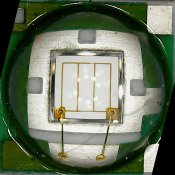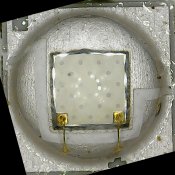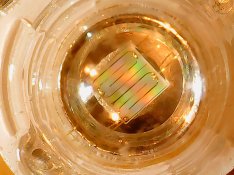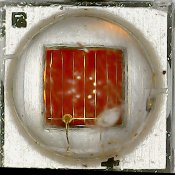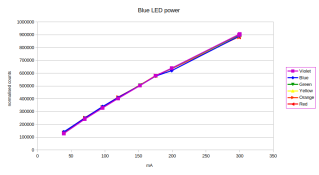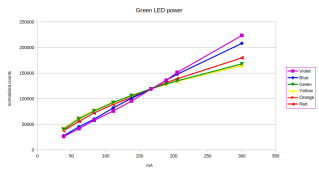The cause of what I was seeing is that a COB is not a point source, nor is it a narrow filament. If you look at a COB led, you'll notice that the light emitting surface is usually 1x1cm for a 10W device and it gets larger as power goes up since the individual LEDs that make up the COB are exactly the same and usually placed at the same pitch.
A single element LED you can regard as a point source, but anything that's made up of several elements won't effectively be a point source anymore.
Edit: for clarification, this is the type of COB LED I used for said test. The area covered by the arrays if LEDs is about 20x20mm effectively. No matter how you fiddle with the positioning, there's no way something like this is ever going to act as a point source.

A single element LED you can regard as a point source, but anything that's made up of several elements won't effectively be a point source anymore.
Edit: for clarification, this is the type of COB LED I used for said test. The area covered by the arrays if LEDs is about 20x20mm effectively. No matter how you fiddle with the positioning, there's no way something like this is ever going to act as a point source.

Last edited:









